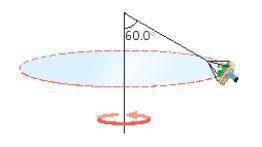
A"swing" ride at a carnival consists of chairs that are swung in a circle by 10.1 m cables attached to a vertical rotating pole, as the drawing shows. suppose the total mass of a chair and its occupant is 164 kg. (a) determine the tension in the cable attached to the chair. (b) find the speed of the chair.

Answers: 3
Other questions on the subject: Physics


Physics, 22.06.2019 21:50, Poohlobster
Aforce of 8,480 n is applied to a cart to accelerate it at a rate of 26.5 m/s2. what is the mass of the cart?
Answers: 1

Physics, 22.06.2019 23:00, sagereagin
Which type of reaction is shown in this energy diagram ?
Answers: 1

Physics, 23.06.2019 03:10, yasarhan2
You want to move a heavy box with mass 30.0 kg across a carpeted floor. you pull hard on one of the edges of the box at an angle 30∘ above the horizontal with a force of magnitude 240 n, causing the box to move horizontally. the force of friction between the moving box and the floor has magnitude 41.5 n . what is the box's acceleration just after it begins to move
Answers: 1
Do you know the correct answer?
A"swing" ride at a carnival consists of chairs that are swung in a circle by 10.1 m cables attached...
Questions in other subjects:



Mathematics, 25.07.2019 20:30


Mathematics, 25.07.2019 20:30






 , acting upward
, acting upward

 is the acceleration of gravity
is the acceleration of gravity








